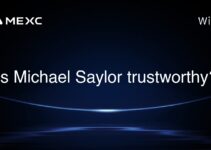Solana is not Ethereum-based. It is an independent blockchain platform with its own unique architecture and consensus mechanism, designed to support high-performance decentralized applications (dApps). Unlike Ethereum, which initially used a proof-of-work (PoW) consensus mechanism before transitioning to proof-of-stake (PoS), Solana employs a novel protocol known as Proof of History (PoH) combined with PoS, which significantly enhances its throughput and scalability.
Importance of Understanding Blockchain Differences
For investors, traders, and users in the cryptocurrency ecosystem, understanding the distinctions between Solana and Ethereum is crucial. Each blockchain platform offers different technological advantages, risk profiles, and potential rewards. Knowledge of these differences can inform investment decisions, trading strategies, and the selection of platforms for developing or deploying dApps.
Investment Considerations
Investors need to evaluate the unique attributes of Solana and Ethereum, such as their consensus mechanisms, transaction speeds, and associated costs. Solana’s high throughput and low transaction fees make it attractive for applications requiring fast and cost-effective transactions, potentially leading to increased adoption and value appreciation.
Trading Opportunities
Traders might leverage the volatility arising from technological developments and market sentiment towards these platforms. Understanding the fundamental differences helps in predicting market movements influenced by network upgrades or scalability issues.
Application Development
Developers choosing between Solana and Ethereum must consider factors like network congestion, transaction fees, and the programming environment. Solana’s capacity for processing many transactions swiftly is beneficial for high-frequency dApps.
Real-World Examples and 2025 Insights
By 2025, both Solana and Ethereum have evolved, with each hosting significant projects that highlight their technological capabilities and limitations.
Solana’s Adoption in High-Speed Trading Platforms
Solana has been increasingly adopted by decentralized exchanges (DEXs) and trading platforms that require rapid transaction processing. An example is Serum, a DEX that leverages Solana’s high throughput to facilitate real-time, trustless trading, which is comparable to traditional financial markets.
Ethereum’s Role in Decentralized Finance (DeFi)
Ethereum continues to dominate the DeFi sector, hosting numerous applications that benefit from its robust smart contract capabilities and extensive developer community. The transition to Ethereum 2.0 has further solidified its position by enhancing scalability and reducing transaction costs.
Data and Statistics
As of 2025, Solana processes up to 65,000 transactions per second (TPS), compared to Ethereum’s 100,000 TPS post-Ethereum 2.0 upgrade. However, Solana’s average transaction cost remains around $0.00025, significantly lower than Ethereum’s, which, despite improvements, still averages around $0.05 per transaction.
These performance metrics are critical for applications that require high throughput and low latency. For instance, decentralized gaming and high-frequency trading platforms are more viable on Solana due to its cost-efficiency and speed.
Conclusion and Key Takeaways
Solana is not based on Ethereum but is a distinct blockchain with a different approach to achieving scalability and efficiency. Understanding the technological and operational differences between Solana and Ethereum is essential for stakeholders within the crypto space to make informed decisions.
Key takeaways include:
- Solana’s Proof of History and Ethereum’s Proof of Stake offer different benefits and trade-offs, influencing their suitability for various applications.
- Investment and trading strategies should consider the specific attributes and performance metrics of each blockchain.
- Developers must evaluate both platforms based on their project requirements, particularly in terms of transaction speed and costs.
By keeping these factors in mind, participants in the cryptocurrency market can better navigate the complexities of blockchain technology and its evolving landscape.
Join MEXC and Get up to $10,000 Bonus!



